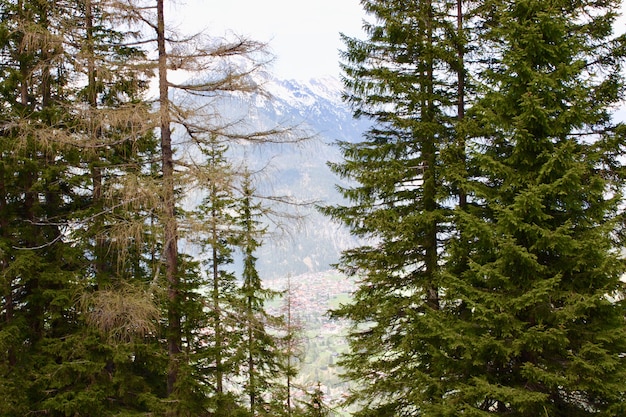
Discover Cedar Breaks National Monument: A Hidden Gem in Southern Utah
Nestled in Southern Utah, Cedar Breaks National Monument spans 6,155 acres of stunning alpine terrain and features a captivating canyon amphitheater. Though it’s a smaller park, it offers plenty to discover over a day or two, providing a tranquil escape for those looking to explore lesser-known natural wonders.
Your Perfect Trip Guide to Cedar Breaks National Monument
About Cedar Breaks National Monument:
Perched at an elevation exceeding 10,000 feet, Cedar Breaks boasts breathtaking views of its amphitheater, somewhat reminiscent of Bryce Canyon but with fewer hoodoos. While it may lack in hoodoo numbers, it more than compensates with its alpine scenery, delightful trails, and serene atmosphere. Despite its compact size, the park allows visitors to swiftly tour several overlooks and enjoy various hikes, often with little to no crowd.
Established in 1933, Cedar Breaks remains relatively undiscovered by many. Its unique geological formations, diverse flora and fauna, and peaceful solitude make it an ideal destination for nature enthusiasts.
Best Time to Visit Cedar Breaks:
While the park is accessible year-round, the main road and visitor center are closed from November to April. The optimal visiting period is from mid-May through mid-October. In spring, the rebirth of nature is a sight to behold, though early-season visitors might still encounter snow. Summers offer mild temperatures, providing a pleasant contrast to the scorching heat of nearby Zion. Fall, with its cool temperatures and vibrant foliage, is arguably the best time to visit. During winter, adventurous visitors can snowshoe or cross-country ski, experiencing the park’s serene snowy landscapes.
Activities at Cedar Breaks National Monument:
Observation Points:
Cedar Breaks features numerous observation points, each offering unique vistas of the amphitheater:
– Point Supreme: Adjacent to the new contact center, offers splendid views.
– Chessman Ridge: A central overlook and starting point for the Alpine Pond loop.
– North View: Northern overlook with a ranger post where you can pay the entrance fee.
– Sunset View: Southern-end overlook with gorgeous views.
– Spectra Point: Requires a hike to reach, but worth the effort for its northward view.
– Rampart’s: A beautiful viewpoint along the South Rim Trail.
– Bartzen: The furthest viewpoint along the South Rim Trail, rarely visited but worth the trek.
Hiking:
The park offers several accessible hiking trails:
– Sunset Trail: A 2-mile easy paved trail between Point Supreme and Sunset View.
– Nature Trail: A 0.6-mile connector trail between the campground and the amphitheater.
– Alpine Pond: A moderate 2-mile loop featuring a small alpine pond, forest sections, and amphitheater views.
– South Rim Trail: A challenging 5-mile out-and-back trail from Point Supreme, with most hikers turning around at Ramparts.
Stargazing:
Thanks to its high elevation and minimal light pollution, Cedar Breaks is perfect for stargazing. Many visitors gather at overlooks to marvel at the night sky. The park also offers ranger-led stargazing programs during summer.
Accommodations:
While the park hosts one campground, nearby lodging options cater to various preferences:
Camping:
– Point Supreme Campground: 25 sites for RVs and tents, available from June to September.
– Te-ah Campground: Located south of Cedar Breaks, with 40 sites available by reservation.
Hotels:
– Navajo Lake Lodge: Rustic cabins near Navajo Lake.
– Bard Inn: A charming B&B with friendly hosts and a delightful breakfast.
– Big Yellow Inn: Spacious B&B rooms within walking distance of the University.
RV Parks:
– Cedar Canyon: 40 RV sites with tent and cabin options east of Cedar City.
– Duck Creek: A small site in Duck Creek Village.
– Cedar City RJourney: A large RV park in Cedar City.
Essential Information:
Visitor Center:
Address: 4730 UT-148, Brian Head, UT 84719. Open from June to mid-October. A new contact station opening in 2024 promises exciting exhibits and easy access to Point Supreme Overlook.
Altitude:
At over 10,000 feet, visitors should be cautious of altitude sickness. Stay hydrated and take it easy on longer hikes.
Fees:
$10 per person (16+). National Park Annual Pass is accepted.
Getting There:
Cedar Breaks is about 45 minutes from Cedar City via UT-148. Plan ahead if visiting during the off-season as the road closes seasonally.
Distances to Cedar Breaks:
– Duck Village: 17 miles (30 minutes)
– Cedar City: 26 miles (40 minutes)
– Bryce Canyon National Park: 55 miles (1.5 hours)
– St. George: 77 miles (1.5 hours)
– Zion National Park (Spring Dale): 85 miles (2 hours)
– Las Vegas: 200 miles (3.5 hours)
– Salt Lake City: 248 miles (4 hours)
Air Travel:
The closest airport is Cedar City Regional Airport (CDC), although St. George Regional Airport (SGU) offers more flight options. Salt Lake City (SLC) and Las Vegas (LAS) are around four hours away.
Tips & FAQs:
– Prepare for altitude with adequate hydration.
– Check the weather and dress appropriately.
– Bring water, sunscreen, and good footwear.
– Don’t miss out on the incredible stargazing opportunities.
Further Reading:
– Epic Utah Road Trip Guide: Zion to Bryce Canyon
– 21 Best Things to Do in Bryce Canyon National Park
– Explorer’s Guide to Utah’s Arches National Park
– Best Things to Do in Page, Arizona
– 15 Amazing Things to Do in Petrified Forest National Park